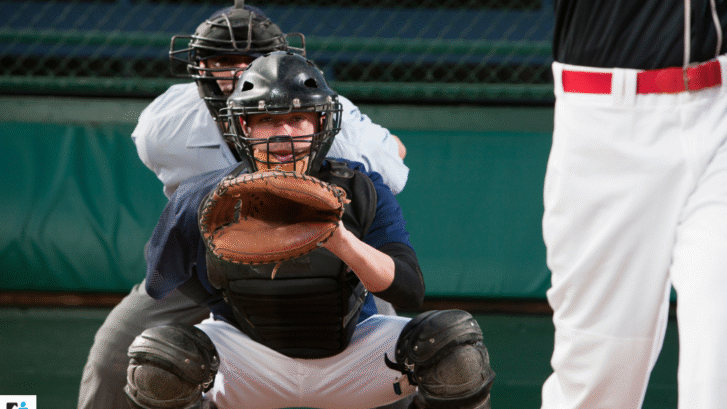Sports Injury Hall of Fame: Buster Posey
In May of 2011, Major League Baseball would witness an injury that would lead to one of the most significant rule changes in the history of the sport. Gerald “Buster” Posey, the San Francisco Giants’ All-Star catcher, was preparing for another winning season, until he suffered a devastating double injury to his leg and ankle during a game against the Florida Marlins.
As the Marlins’ Scott Cousins ran into home plate, he collided with Posey who was blocking the plate. The impact shattered Posey’s fibula and tore ligaments in his ankle, abruptly ending his season right as it had begun.
Posey’s injury reignited a debate that had been stirring for decades: should home plate collisions be banned? Historically, catchers had been fair game for aggressive baserunners attempting to dislodge the ball and score, but the severity of Posey’s injury highlighted the risks involved in these collisions.
Fibula Injuries
The fibula is one of 2 bones in the leg below the knee along with the femur. The tip of the fibula (also known as the head) moves in tandem alongside the tibia and the knee joint. The femur is much stronger than the fibula, and as such it is a lot more common to break the fibula.
The shaft is the longest part of the fibula and is the primary component in maintaining the calf’s structure. The fibula also helps to form the top of the ankle joint and connects the ankle to the tibia. This is important to keep in mind regarding Buster’s injury since he also tore ligaments in his ankle.
The fibula:
- Provides ankle support.
- Supports the muscles and tendons in the legs and ankles.
- Supports and adds structure to the lower leg and calf.
- Adds structure to the upper leg and knee.
- Connects the upper and lower leg.
The fibula can become fractured when it sustains a forceful impact or experiences stress and pressure. It often breaks right above the ankle, but it can occur elsewhere on the fibula as well. Continued issues with the fibula can often lead to osteoporosis.
Posey underwent open reduction and internal fixation surgery, also known as ORIF.
The surgery consists of the bones being realigned to their proper position, unto which they are secured in place to heal and reconnect.
Healing from a broken fibula can take several weeks, often up to two months. Doctors may recommend keeping the bone from moving for about four weeks so it has time to mend. Depending on the injury, you might also need imaging like X-rays or MRIs, possible surgery, and physical therapy to regain strength and movement.
What is ORIF Surgery?
Open Reduction and Internal Fixation (ORIF) is a type of surgery used to fix serious bone breaks. In this procedure, an orthopedic surgeon carefully moves the bone back into its proper position and then uses medical hardware (like screws, rods, or plates) to hold everything in place while it heals.
Before Surgery
Bone breaks often happen suddenly from accidents, falls, or sports injuries. Because of this, there’s sometimes little time to plan before surgery. What happens beforehand depends on:
- Which bone is broken
- The type and severity of the fracture
- How the injury happened
- Whether there are other injuries involved
In emergency situations, doctors first focus on stabilizing you and addressing the most serious issues. Once you’re stable, imaging tests such as x-rays, CT scans, or MRIs help confirm the break and reveal any additional damage.
During Surgery
Before surgery, anesthesia is given so you won’t feel pain. This may be general anesthesia (you’re fully asleep) or regional anesthesia (numbing just the injured area).
The surgery has two main steps:
- Open Reduction. The surgeon makes an incision to access the bone and put the broken pieces back in their correct position.
- Internal Fixation. Metal fasteners (screws, rods, plates, or wires) are placed inside the bone to keep it stable while it heals.
Once the bone is secured, the incision is closed, and the limb is usually placed in a cast or splint.
After Surgery
You’ll spend some time in recovery so the team ‘s medical staff can monitor your vitals and pain levels. Some patients go home the same day, while others may stay overnight or longer if the injury is more severe.
Benefits of ORIF
The main benefit is ensuring the bone heals in the correct position. Without this type of surgery, badly broken bones may not heal properly, which increases the chance of re-injury. ORIF gives the bone the best chance to heal fully and function normally again.
Risks and Possible Complications
As with any surgery, there are risks. These can include:
- Bones healing incorrectly (malunion) or not healing at all (nonunion)
- Blood clots near the injury site
- Infection, especially if the fracture broke through the skin
- Nerve or muscle problems from swelling (rare but serious)
Recovery and Outlook
Recovery time varies. Some fractures heal in a few weeks, while others may take months or even a year. You may need:
- Elevation – Keeping the limb raised to reduce swelling
- Wound care – Following instructions for caring for your incision and cast
- Physical therapy – To restore strength and movement after immobilization
Pain is expected during the first few weeks. Doctors often recommend a mix of prescription pain relief, over-the-counter medications, and anti-inflammatory drugs if safe for you.
Are the Screws and Plates Permanent?
Sometimes the hardware stays in place for life, especially around joints like the ankle. In other cases, the surgeon may remove them in a later procedure. Your doctor will guide you on what to expect based on the location and type of fracture.
Ankle ligament injuries
The ankle ligaments are fibrous bands that connect the bones of your lower leg (tibia and fibula) to the bones in your foot (talus, calcaneus, and navicular). The ankle ligaments also help to stabilize the ankle joint by keeping bones in proper alignment. They also prevent excessive movement, such as twisting or collapsing. Without them, physical activities like standing, walking, or running would be almost impossible.
The ankle ligaments are able to:
- Absorb shocks.
- Maintain bone alignment.
- Limit harmful movement.
- Stabilize the ankle.
There are 3 primary ankle ligament groups:
- Medial: Inner ankle. Connects the tibia to the foot bones
- Lateral: Outer ankle. Connects the fibula to the talus and calcaneus.
- Syndesmotic: Upper ankle. Connects the tibia to the fibula and maintains ankle alignment.
Brand New Rules
The Posey Rule aimed to reduce injuries while preserving the competitive nature of the game. While many traditionalists initially resisted the change, arguing that it would soften baseball’s perceived grit and toughness, most players and coaches eventually supported the rule, often recognizing the long-term benefits for player health.
Debuting in February 2014, it was originally numbered Rule 7.13, and was later renumbered 6.01(i). The rule states:
- Runners may not deviate from a straight path to home plate to initiate contact with the catcher.
- Catchers can’t block the plate without already having possession of the ball.
- Violation results in the runner being called out. This occurs whether or not the catcher drops the ball or he is ruled safe if the catcher illegally blocks the path.
Intent and effort to slide will be judged by the umpire, who has the authority to call unnecessary or avoidable collisions.
Achieving the dream
Buster Posey returned from his injury stronger than ever, winning the National League MVP in 2012 and leading the Giants to multiple World Series titles. His ordeal not only showcased his resilience, but also left a lasting legacy that continues to protect players across the league.
If you or a loved one are seriously injured while playing a contact sport, seek treatment immediately. To avoid serious injury and prolong your sports career, visit Healthpointe today.
Healthpointe specializes in physical healthcare, and we have an extensive roster of board certified physicians who are well suited to help with pain management. Our team can help assist you with prevention and treatment of a variety of ailments. Fill out this form to set up an appointment.
We also offer texting services! Give us a call or text us to schedule an appointment today at (714) 367-5390.
We have locations in Anaheim, Colton, Corona, Garden Grove, Irwindale, La Mirada, Long Beach, Los Angeles, Ontario, Perris, and Temecula.

